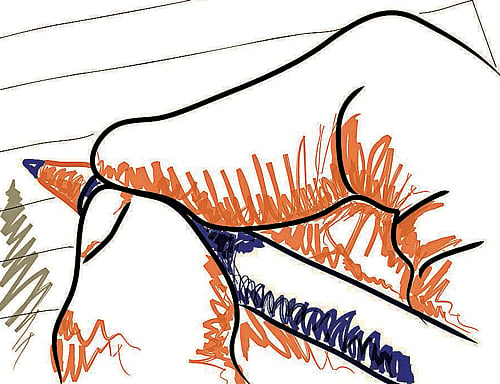
Handwriting practice or cursive writing is still very much a part of the elementary school curriculum and children struggle valiantly at this exercise in their four lined notebooks.
Teachers on their part impart lessons on cursive writing, teaching how to shape connected-up letters in the hope that their students will one day have legible and neat penmanship.
However, cursive writing is facing extinction in the face of technology. Why is this so? With the increased presence of keyboards everywhere, the days of cursive writing may be numbered and schools are seeing the writing on the wall.
As the end of cursive writing appears to be approaching, many parents and educators probably find themselves wondering; should we still be teaching cursive writing?
About 45of the 50 US states and two Canadian provinces (Ontario and Quebec) have already said goodbye to cursive writing as an official part of the curriculum. Other provinces, like Nova Scotia, allow teachers to decide how often students need to practice their cursive.
And should it be part of the curriculum in India and why? With limited time to cram everything in from the curriculum as it is cursive writing is just one more thing teachers have to help students with. Given the pervasiveness of electronic communication, is cursive handwriting relevant?
In the past, cursive writing or handwriting was an integral part of education as one of the three “R’s.” Now in the discussion around the evolving nature of literacy we have to question this inclusion given the fact that most students need keyboard literacy much more than penmanship.
For those who believe that cursive writing remains integral, though, all hope is not lost, as some US states and Canadian provinces continue to make cursive writing compulsory. As belonging to a generation which did learn cursive writing, ask yourself, do you use this writing in your daily life?
A Canadian teacher responding to this question said, “Once they learn it, they are left to their own devices whether they choose to use it or not. I have the expectation that once they learn it they continue to use it.”
There are other arguments for keeping cursive in the curriculum. In a recent report, occupational therapist Suzanne Asherson said that there’s a link between cursive writing and brain development, and it should still be considered as part of a valuable skill set students are taught.
“In today’s world, children need to know how to both use keyboard to type, and be able to pick up a pencil or a pen and be able to write,” Asherson said. “Both skills are necessary and should be taught to our children in order to have functional adults who are efficient in their jobs and in the real world.”
Unfortunately for Asherson, her last example contradicts her own point, “As an employed adult, most of my work is done on a keyboard, as is the case for many Canadians. And while I do often take notes, it isn’t in cursive; it’s in print (as my cursive is barely legible by myself, let alone anyone else). Aside from signing my name, I rarely, if ever, use cursive.”
Since use of computers and tablets is not as widespread yet in India as in the West perhaps cursive writing still has a role in the educational curriculum but with tablets getting better and cheaper day by day, the writing is on the wall and it says cursive writing is on the way out.
